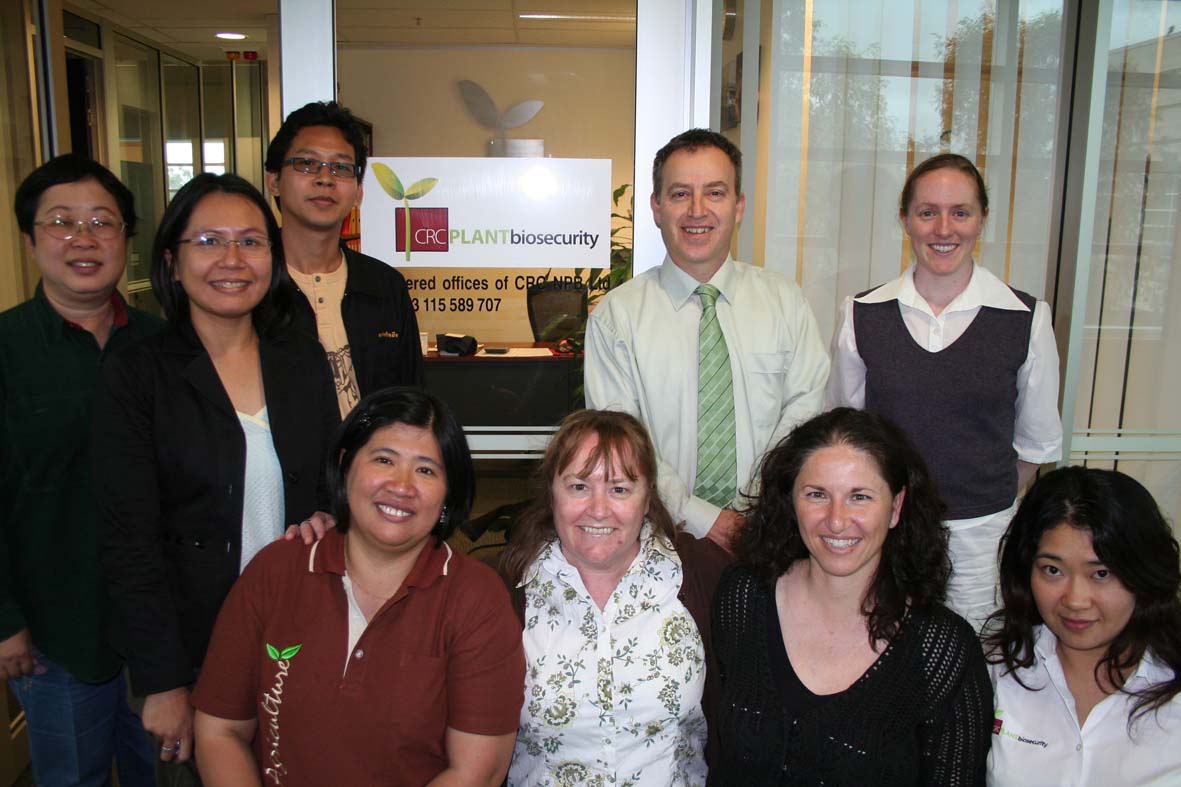Simon says...
.jpg) Season’s greetings to all our Leaflet readers! Season’s greetings to all our Leaflet readers!
I recently started thinking about the holiday season and what the implications are for biosecurity. People across the globe fly home to be with their families, or take their annual holidays to exotic, far flung destinations, bringing home unique souvenirs to remind them of their break. In Australia, families pack up the car and take a long, hot road trip, often passing several state borders and maybe even a quarantine inspection point. There is no doubt the increase in passenger travel amplifies the risk of biosecurity incursions.
And without sounding like the Christmas Grinch, for those of you who still believe in Santa; don’t let me get started on him! Travelling across the globe – to every country – in one night without taking any quarantine precautions sounds like risky business to me. One can only ponder at what pathogens, insects and seeds are on his big black boots, the bottom of his sleigh, and those reindeer have no procedure to disinfest their hooves in footbaths. Wrapped presents that aren’t screened, and a reindeer with a big bright red nose – surely that’s a sign of an emerging infectious disease?
Enough of giving Santa and his reindeers a hard time…I will leave the livestock biosecurity issues to the animal experts and start talking plant biosecurity. I have recently set up my own blog as a way to promote two-way communication across the plant biosecurity community. The blog is aptly named www.talkingplantbiosecurity.com and will provide an avenue to discuss relevant issues and also our impending re-bid for another term. I encourage you to visit my blog and leave comments or questions for me, or respond to each other’s comments.
Speaking of the re-bid, on Wednesday, the Department of Industry, Innovation, Science and Research announced the 2010 Selection Round for the CRC Program. The Minister stated he is ‘especially calling for applications in two priority areas – manufacturing innovation and social innovation’. It was interesting to see there were no agriculture CRCs successful in the 2009 Selection Round. So what does this mean for us? In short, we continue our strategy to build a very robust bid for another term of this CRC. This will be facilitated through a taskforce representing all key participant areas (see my blog for more information). It is essential that our bid clearly articulates solutions to end-user needs through high-level science as a critical mechanism to underpin a sound biosecurity system. In particular, we need to state the importance of science to maintain Australia’s trade/market access and reputation as an exporter of quality pest free produce.
As part of the re-bid process, I am confident the panel will look to the successes of our current CRC. With the end of the year approaching, this is the ideal time to thank everyone involved across our research portfolio for their contribution to our achievements this year. This includes all researchers, staff, students and their supervisors, as well as our research collaborators. We could not function without strategic direction from our Science Committee, Grains Advisory Panel, Participants Committee and Board, so I thank them for their continued support and guidance. Everyone who is involved in our CRC is helping to achieve our vision of becoming a world leader in the generation, development and delivery of plant biosecurity science and education.
I would also like to use this opportunity to thank Melanie Hay for all her work in our Education and Training Program. Mel has recently resigned to take up a secondary school science teaching position here in Canberra. Mel has been instrumental in producing and implementing our successful schools program, Plant Pest Investigators. Leaving behind this legacy, I am confident Mel will bring her enthusiasm for science in to the classroom and now has the additional skills to teach her students about plant biosecurity! On behalf of everyone at the CRC, I wish her a successful career back in the education system.
To finish off, I would like to wish you all a very happy and safe Christmas and New Year, wherever you are. I look forward to sharing more of our successes with you in 2010 and hope that by this time next year, someone has had a word to Santa about his biosecurity practices…
Until next time…

Dr Simon McKirdy
Chief Executive Officer |
in this issue...

from the arm of the chair
Chairman, Professor John Lovett reminisces on the successes of 2009 READ MORE
decision support tools for prioritising biosecurity risk
Simulating the economic damage of a potential incursion, ERAT holds its final Expert Reference Panel READ MORE
post-harvest pests in the laboratory
New laboratory focused on post-harvest biosecurity opens at Murdoch University READ MORE
biosecurity defends key rural industry
Our scientists are turning to the genetic codes of stored-grain insects to find out why they are becoming resistant to phoshpine and are also developing a test to help grain handlers rapidly confirm insect resistance and adjust their fumigation strategies READ MORE
other news...
Internationally renowned plant pathologist shares her research at seminars in Horsham and Brisbane READ MORE
Thai scientists recently came to Australia to increase their diagnostic skills READ MORE

Learn about the rapidly expanding user base for our Remote Microscope Network READ MORE
Dr Pat Collins is kept busy as Program Leader of our Post-Harvest Integrity Research Program, but what does he like to do in his 'spare' time? READ MORE
Would you like to contribute to The Leaflet, or provide suggestions for content?
Email us with your ideas.


|

 Dr Karen A Garrett, Associat
Dr Karen A Garrett, Associat
.jpg) Season’s greetings to all our Leaflet readers!
Season’s greetings to all our Leaflet readers!



 Due to the increased movement of people and agricultural
Due to the increased movement of people and agricultural 
